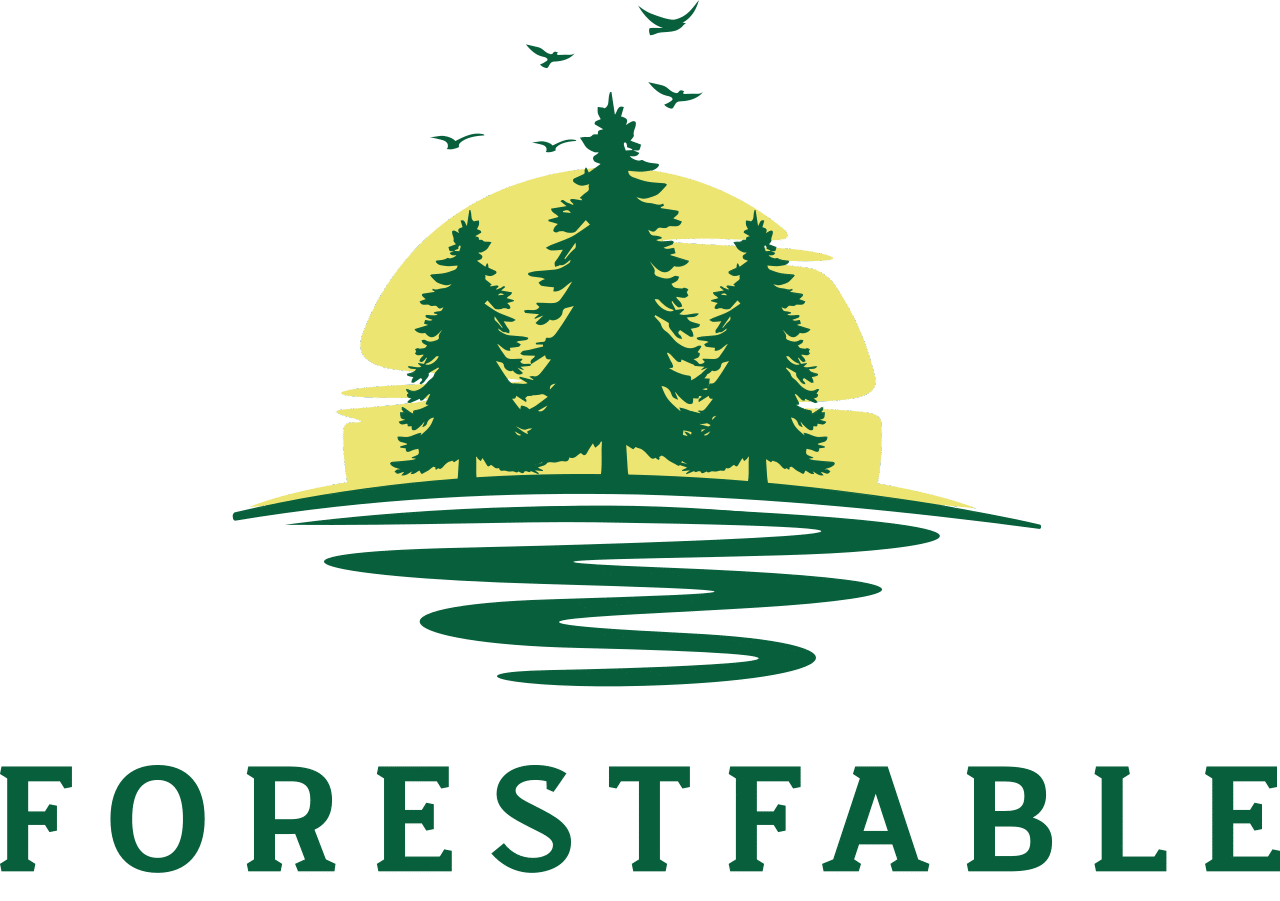In Pennsylvania, where rolling forests and farmland define much of the landscape, landowners face the dual challenge of maintaining their properties and preserving ecological health. Invasive species like tree-of-heaven and Japanese stiltgrass threaten native ecosystems, while rising property taxes strain budgets. Enter the Family Forest Carbon Program (FFCP), a groundbreaking initiative by the American Forest Foundation (AFF) and The Nature Conservancy that offers landowners financial incentives to manage their forests sustainably. By enrolling in the FFCP, Pennsylvania landowners can fund invasive species removal and offset property taxes, all while contributing to climate change mitigation. This 2,000-word guide explores how the FFCP works, its benefits for landowners and the environment, and how it aligns with Pennsylvania’s conservation goals, drawing from real-world examples and expert insights.
The Challenge: Invasive Species and Property Taxes in Pennsylvania
Pennsylvania’s forests, covering nearly 17 million acres, are vital for biodiversity, carbon sequestration, and recreation. However, invasive species—non-native plants, insects, and animals introduced through human activity—pose a significant threat. Species like tree-of-heaven (Ailanthus altissima), mile-a-minute vine, and multiflora rose outcompete native plants, disrupt ecosystems, and reduce forest resilience. According to Penn State Extension, managing invasive plants can cost $200–$500 per acre initially, with annual follow-up treatments at $50–$150 per acre, creating a financial burden for landowners.
Simultaneously, property taxes in Pennsylvania, based on fair market value, can be prohibitive for landowners with large parcels. For example, in Carbon County, assessed values reflect market demand, which has surged due to development pressures. The Pennsylvania Farmland and Forest Land Assessment Act, known as Clean and Green, offers tax relief by assessing land based on use value rather than market value, but eligibility requires a minimum of 10 acres or $2,000 in annual farm income, and rollback taxes apply if land use changes.
For landowners like Susan Benedict, who inherited 2,000 acres of family forest, these challenges are personal. “Whenever I got a bill, I was like, ‘Oh my gosh! How do I pay for it?’” she told Nexus Media. Timber harvesting was often her only option to cover costs, but it conflicted with her goal of preserving the land’s ecological integrity. The FFCP offers a solution, providing payments for carbon sequestration that can fund invasive species management and tax obligations without resorting to logging.
What is the Family Forest Carbon Program?
Launched in 2020 by AFF and The Nature Conservancy, the Family Forest Carbon Program is a climate-smart forestry initiative designed for small-scale forest owners with as little as 30 acres. Operating in states like Pennsylvania, West Virginia, and Maryland, the program incentivizes sustainable forest management practices that enhance carbon storage, improve forest health, and support biodiversity. Landowners receive annual payments for implementing practices like thinning smaller trees or gap harvesting, which promote larger tree growth and long-term carbon sequestration.
The FFCP uses a 20-year contract model, where landowners work with professional foresters to develop tailored management plans. These plans address local challenges, such as invasive species, while ensuring compliance with carbon market standards. Payments are funded through the sale of carbon credits to corporations like REI, which use them to offset emissions and meet net-zero goals. Unlike traditional timber markets, the FFCP prioritizes standing trees, making forests more valuable as carbon sinks than as lumber.
In Pennsylvania, the program aligns with state initiatives like the Clean and Green program and the Pennsylvania Invasive Replace-ive Program, which encourages replacing invasive trees with native species like redbud or white oak. By integrating carbon payments with these efforts, landowners can achieve financial and ecological goals simultaneously.
How the FFCP Supports Invasive Species Removal
Invasive species are a major threat to Pennsylvania’s forests, altering habitats, reducing biodiversity, and affecting carbon storage. For example, Japanese stiltgrass increases fire intensity, suppressing native tree seedlings, while mile-a-minute vine shades out oak saplings, hindering forest regeneration. The FFCP addresses these issues by funding invasive species management as part of its forest health practices.
The Process
- Assessment: Landowners enroll through the FFCP website, and a forester evaluates the property for invasive species, forest composition, and carbon potential. Tools like satellite imagery and AI, used by partners like NCX, estimate carbon storage capacity.
- Management Plan: The forester develops a plan that may include manual removal, herbicide application, or mechanical clearing of invasives like tree-of-heaven. Native species replanting, supported by programs like the Pennsylvania Invasive Replace-ive, is often recommended.
- Implementation: Landowners or hired professionals execute the plan. Carbon payments cover costs, which can range from $200–$500 per acre for initial removal.
- Monitoring: Regular check-ins ensure invasives are controlled and carbon goals are met. Follow-up treatments, costing $50–$150 per acre annually, are also funded.
Real-World Impact
Take Sara Velazquez and Dan Nelson, who own 55 acres in Wayne County, Pennsylvania. Their forest was overrun with invasive species, and property taxes were a constant concern during the pandemic. After enrolling in the FFCP in 2021, they received payments to remove invasives and manage for rare plants like snow trillium. The funds also covered their tax bills, allowing them to avoid logging. “A nice, healthy oak forest—that’s what I want,” Velazquez told the Thomson Reuters Foundation.
Similarly, Susan Benedict used FFCP payments to tackle invasives on her 2,000-acre property. By thinning smaller trees and removing multiflora rose, she improved forest health and carbon storage, with payments offsetting maintenance and tax costs.
Covering Property Taxes with Carbon Payments
Property taxes can be a significant hurdle for Pennsylvania landowners, especially those with large, undeveloped parcels. The Clean and Green program reduces taxes by assessing land based on use value—$35.98 per acre in Carbon County to $318.41 in McKean County in 2008—but rollback taxes (seven years at 6% interest) apply if land is developed or removed from the program. FFCP payments provide a steady income stream to cover these taxes, offering an alternative to timber harvesting or land sales.
How It Works
- Payment Structure: Landowners receive annual payments based on the carbon sequestered, calculated using regional timber yields, stumpage prices, and forest type. Payments vary by property size and management practices but can range from $10,000 annually for larger parcels.
- Tax Relief: For a 100-acre forest enrolled in Clean and Green, taxes might be $3,598–$31,841 annually (based on 2008 values). FFCP payments can fully or partially cover this, depending on the contract.
- Flexibility: Unlike Clean and Green, FFCP contracts don’t penalize all land for changes in use. Payments are tied to carbon goals, giving landowners flexibility to adapt management plans.
Case Study: Beckets Run Woodlands
Raul Chiesa and Janet Sredy, owners of Beckets Run Woodlands in western Pennsylvania, enrolled their forest in the FFCP to manage invasives and cover taxes. Their 20-year contract with NCX provided funds for forest stand improvement, including invasive removal, and offset tax obligations. The couple avoided logging, preserving habitat for wildlife and enhancing carbon storage.
Environmental and Community Benefits
The FFCP delivers benefits beyond financial relief, aligning with Pennsylvania’s conservation priorities and global climate goals.
Ecological Advantages
- Biodiversity: Removing invasives like garlic mustard protects native species like oak seedlings, supporting wildlife like birds and mammals.
- Carbon Sequestration: Healthy forests store more carbon. FFCP practices, like thinning, increase carbon absorption by giving larger trees room to grow.
- Resilience: Managing invasives reduces fire risks and improves forest adaptability to climate change, as noted by Penn State Extension.
Community Impact
- Economic Support: Payments stimulate local economies by funding foresters, tree services, and native plant nurseries.
- Conservation Alignment: The FFCP complements programs like the Pennsylvania Game Commission’s Private Landowner Assistance Program, which aids habitat restoration for species of concern.
- Public Awareness: By promoting native species and invasive control, the program educates communities, as seen in the Western Pennsylvania Conservancy’s outreach efforts.
How to Get Started with the FFCP
Pennsylvania landowners interested in the FFCP can follow these steps:
- Eligibility Check: Properties must be at least 30 acres and forested. Contact AFF via their website (www.forestfoundation.org) to confirm eligibility.
- Application: Submit an application with property details. A forester will assess the land’s carbon potential and invasive species presence.
- Contract Signing: Agree to a 20-year contract outlining management practices and payment terms. Contracts are flexible, allowing wood production alongside carbon goals.
- Implementation: Work with a forester to execute the plan, using payments to hire professionals or purchase equipment.
- Monitoring: Participate in annual check-ins to ensure compliance and track progress.
For additional support, landowners can pair FFCP with the Pennsylvania Invasive Replace-ive Program, which offers up to five free native trees for removing invasives like Callery pear. Contact RA-NRCommunityForest@pa.gov for identification assistance.
Challenges and Considerations
While the FFCP is transformative, landowners should weigh potential challenges:
- Long-Term Commitment: The 20-year contract may deter those seeking short-term gains. However, payments provide consistent income, unlike volatile timber markets.
- Upfront Costs: Initial invasive removal can be costly, though FFCP payments offset this over time. Grants from the Pennsylvania Department of Agriculture may supplement funding.
- Management Complexity: Invasive control requires ongoing effort. Landowners can hire professionals, as recommended by the Invasive Replace-ive Program.
- Tax Implications: Carbon payments are taxable income. Consulting a tax professional ensures compliance with Clean and Green requirements.
Why the FFCP Matters in 2025
The FFCP arrives at a critical moment for Pennsylvania, where climate change and invasive species threaten forest health. The state’s Carbon Capture and Sequestration Act of 2024 and federal investments in clean energy, like the $925 million Appalachia Hydrogen Hub, signal a commitment to decarbonization. By engaging private landowners, who own nearly 40% of U.S. forests, the FFCP scales climate solutions while supporting rural economies.
The program also aligns with Pennsylvania’s cultural and economic values. As Lancaster Farming notes, programs like Clean and Green protect farmland and forests from development, but the FFCP goes further by funding active stewardship. For landowners like Velazquez, Nelson, and Benedict, it’s a lifeline that preserves family legacies and natural heritage.
Where to Learn More
To explore the FFCP and related programs:
- Family Forest Carbon Program: Visit www.forestfoundation.org for eligibility and application details.
- Pennsylvania Invasive Replace-ive Program: Email RA-NRCommunityForest@pa.gov or visit www.pa.gov for native tree exchanges.
- Clean and Green: Contact the Pennsylvania Department of Agriculture at (717) 705-7796 or visit www.agriculture.pa.gov.[](https://www.agriculture.pa.gov/Plants_Land_Water/farmland/clean/Pages/default.aspx)
- Local Resources: Connect with the Western Pennsylvania Conservancy (waterlandlife.org) or Penn State Extension (extension.psu.edu) for invasive species guidance.
- Grants: Explore funding from the Pennsylvania Department of Agriculture or federal programs via www.invasivespeciesinfo.gov.[](https://www.invasivespeciesinfo.gov/subject/grants-and-funding)
Final Thoughts
The Family Forest Carbon Program is a game-changer for Pennsylvania landowners, offering a sustainable path to manage invasive species, cover property taxes, and combat climate change. By turning forests into carbon sinks, landowners like Susan Benedict, Sara Velazquez, and Raul Chiesa preserve their land’s ecological and cultural value without sacrificing financial stability. In 2025, as Pennsylvania embraces initiatives like the Invasive Replace-ive Program and Clean and Green, the FFCP stands out as a model for aligning economic incentives with environmental stewardship.
For landowners facing the challenges of invasive species and rising taxes, the FFCP is more than a financial tool—it’s a commitment to healthier forests, thriving wildlife, and a resilient future. Enroll today, connect with a forester, and join the growing community of Pennsylvanians making a difference, one acre at a time. Your forest, your legacy, and your planet will thank you.




